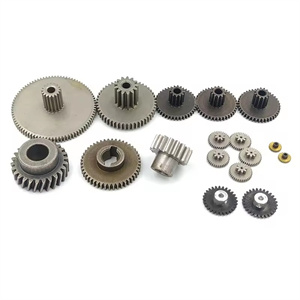Common Materials For Gears CNC Machining
We have been focusing on the gear field for over 20 years and have rich production and processing experience. The commonly used materials for gears vary depending on their usage environment and performance requirements. The following is a clear summary and point wise representation of commonly used materials for gears:
Metallic material
Carbon steel
Features: It has good machinability, hardness, and wear resistance.
Application: Usually suitable for low-speed and medium speed transmission systems.
Example: Low carbon steel, medium carbon steel, high carbon steel, etc.
Stainless steel
Features: It has good corrosion resistance and wear resistance.
Application: Commonly used in chemical equipment, food processing equipment, and other fields, especially ferritic stainless steel.
Example: Stainless steel 304, 316, etc.
Aluminium alloy
Features: Light weight, high specific strength, and good thermal conductivity.
Application: Commonly used in aerospace, automotive, and motorcycle fields to reduce overall weight and improve transmission efficiency.
Example: Aluminum 6061, aluminum 7075, etc.
cast iron
Features: It has good wear resistance and strength.
Application: Suitable for large and heavy-duty transmission systems, commonly used in industries such as steel and coal mines.
Copper alloy
Features: Good lubrication, excellent thermal conductivity, and excellent machining performance.
Application: Used in environments that require high-speed operation and low noise, such as copper zinc alloys, copper aluminum alloys, copper nickel alloys, etc.
Non metallic materials
plastic
Features: It has good shock absorption and noise reduction performance, is lightweight, and does not require lubrication.
Application: Commonly used for equipment that needs to reduce noise and vibration, such as household appliances, office equipment, etc.
Composite material
Features: Composed of two or more materials, usually with better mechanical and friction properties.
Application: Widely used in aerospace, automotive, power and other fields.
Key selection points
Usage environment: Select materials based on the environment in which the gear is used (such as temperature, humidity, and corrosiveness) to ensure that the gear can perform best under appropriate working conditions.
Performance requirements: Consider factors such as gear transmission power, transmission efficiency, wear resistance, corrosion resistance, weight, cost, etc., and select the material that best meets the requirements.
